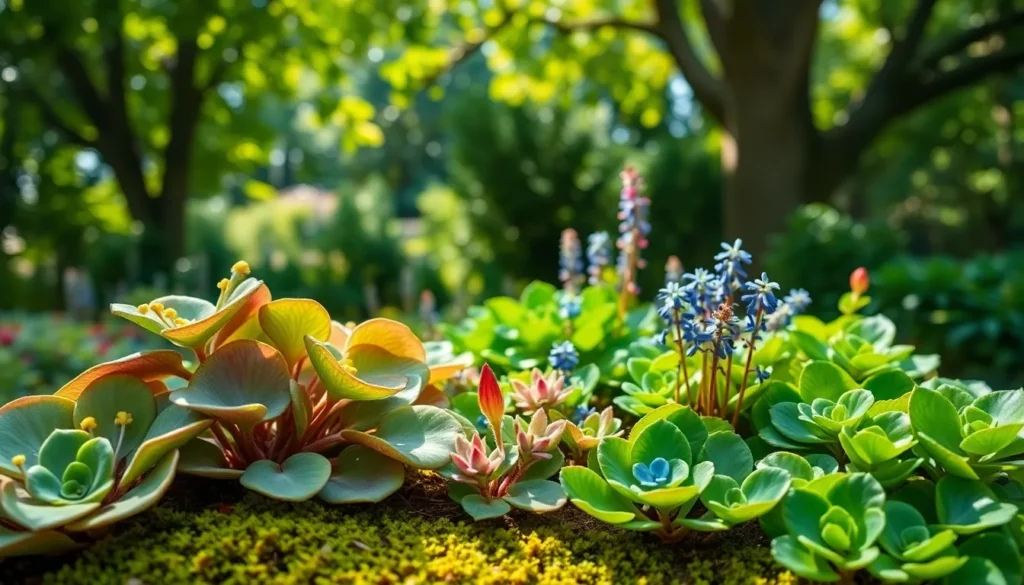Stepping into the world of gardening is like opening the door to a vibrant, living art gallery, where every shade, texture, and fragrance tells a unique story. Whether you’re a budding enthusiast just discovering the joys of nurturing plants or a seasoned gardener with a wealth of green-thumb wisdom, “10 Best Flowering Plants for Shady Areas” is your guide to transforming dim corners into lush, colorful retreats.
In this guide, we’ve handpicked a selection of flowering plants that not only thrive in low-light conditions but also offer a stunning array of blooms to brighten any space. Discovering the right plants for your home can be a game-changer, bringing beauty and tranquility to those often-overlooked areas while boosting your confidence as a gardener.
With the practical advice and insights provided here, you’ll learn how to choose, plant, and care for these resilient beauties, ensuring they flourish under your tender care. Imagine the satisfaction of watching your shady areas burst into life, surprising you with their resilience and rewarding you with their enduring charm.
Bleeding Heart (Lamprocapnos spectabilis)
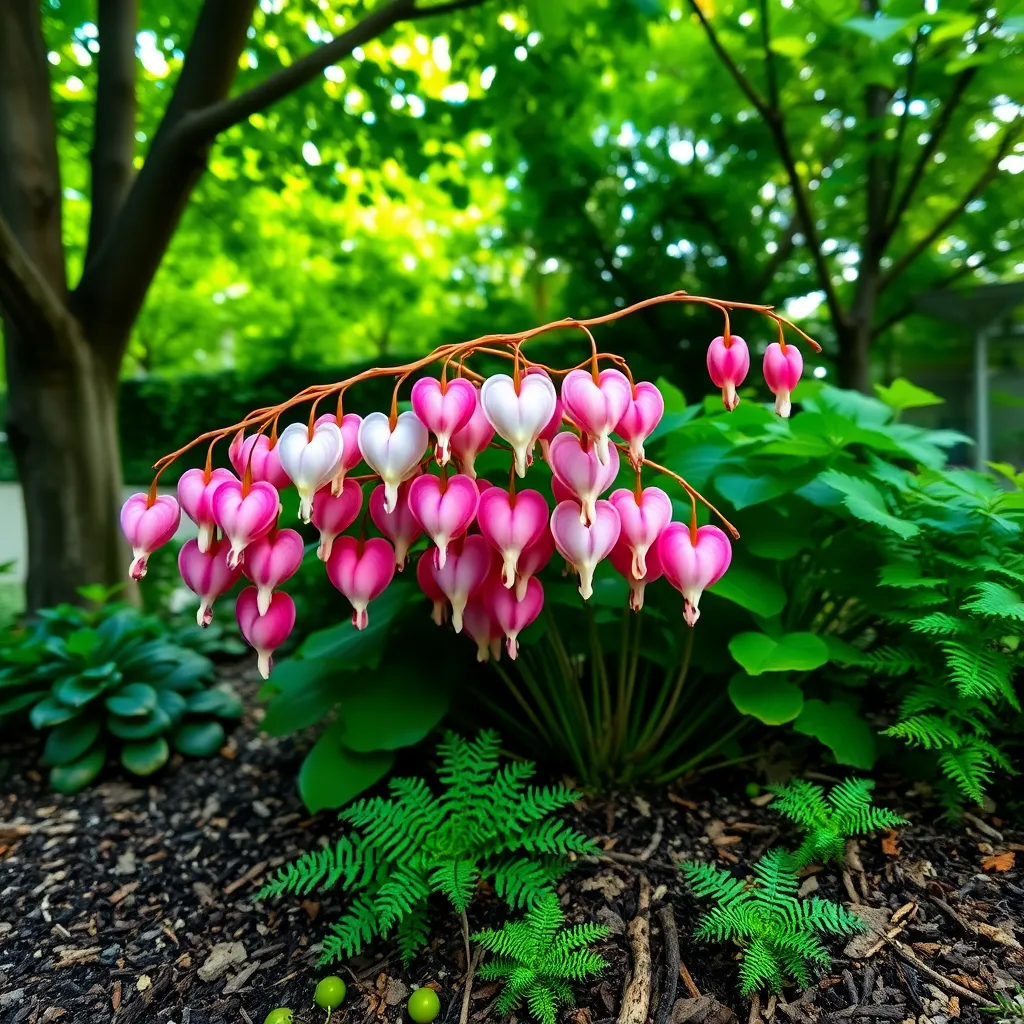
Bleeding Heart (Lamprocapnos spectabilis) is a captivating plant known for its heart-shaped flowers, making it a favorite for shady garden spots. This perennial thrives in partial to full shade and prefers well-drained, moist soil enriched with organic matter.
Planting Bleeding Heart in early spring or fall is ideal, allowing it to establish before the heat of summer. Make sure to water regularly, especially during dry spells, as consistent moisture is crucial for healthy growth.
For optimal blooming, use a mulch layer to retain soil moisture and suppress weeds, keeping it about 2 inches thick. Fertilize with a balanced, slow-release fertilizer in early spring to encourage lush foliage and abundant flowers.
Gardeners with experience can try propagating Bleeding Heart by division in early spring or after blooming, ensuring each section has a healthy root system. Protect the plant from slugs and snails, which are common pests, by using organic repellents or barriers.
Astilbe ‘Fanal’ (Astilbe x arendsii ‘Fanal’)
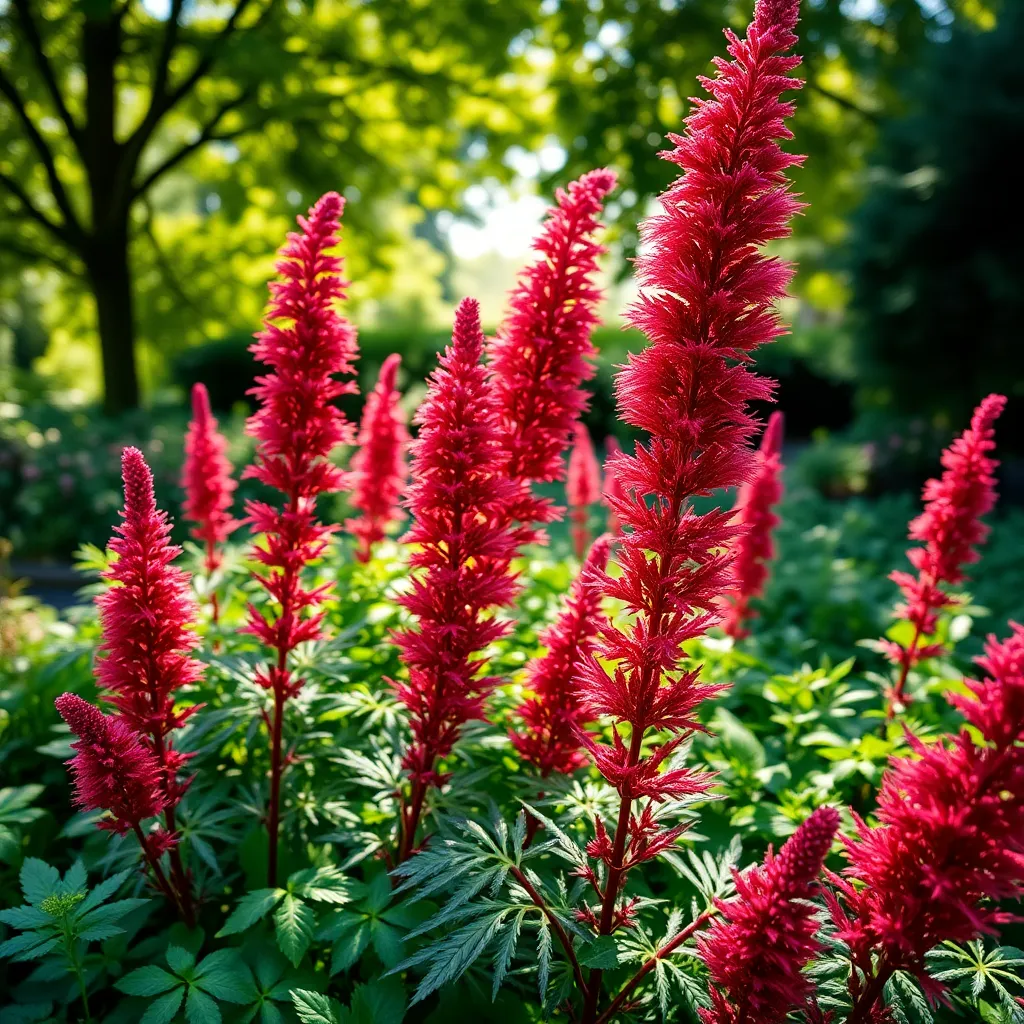
Astilbe ‘Fanal’ (Astilbe x arendsii ‘Fanal’) is a stunning addition to any shady garden, known for its vibrant red plumes and lush, fern-like foliage. This perennial thrives in areas where direct sunlight is limited, making it perfect for gardens with dappled shade or morning sun.
For successful growth, ensure the soil is rich in organic matter and consistently moist but well-drained. Mulching around the base of the plant can help retain moisture and provide the necessary nutrients to support vigorous blooms.
Watering is crucial, especially during dry spells, as Astilbe ‘Fanal’ prefers moist conditions. Aim to water deeply once a week, or more frequently in hotter climates, to keep the soil evenly moist without becoming waterlogged.
To get the best results, incorporate a slow-release fertilizer in early spring to promote healthy growth throughout the season. Deadheading spent blooms will not only keep the plant tidy but can also encourage additional flowering.
Hosta ‘Francee’ (Hosta sieboldiana ‘Francee’)
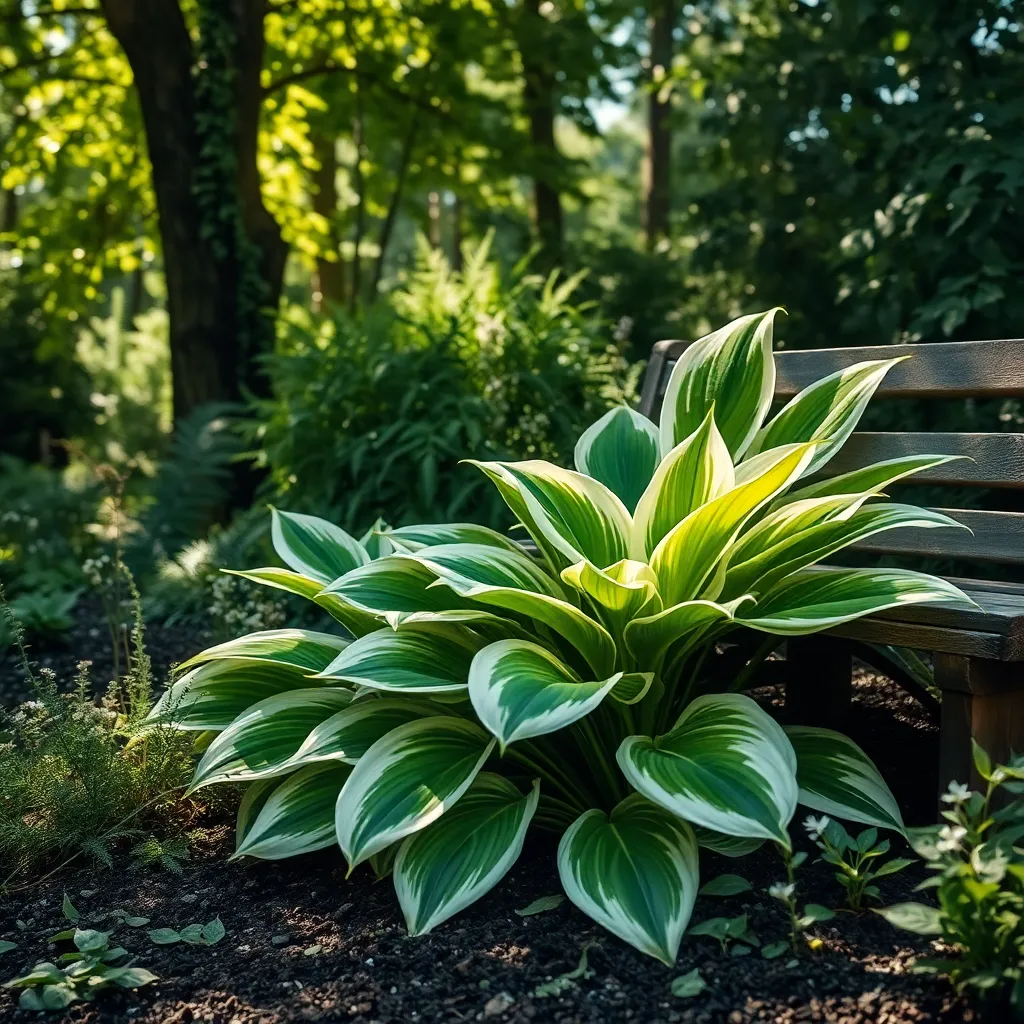
Hosta ‘Francee’ is an outstanding choice for those looking to brighten shady areas with lush foliage. This variety is known for its striking white-edged, dark green leaves that add texture and contrast to any garden setting.
To ensure optimal growth, plant Hosta ‘Francee’ in well-draining soil enriched with organic matter. Water the hosta regularly, especially during dry spells, as this plant prefers consistently moist conditions.
While Hostas are relatively low maintenance, they benefit from a layer of mulch to retain soil moisture and suppress weeds. Fertilize in early spring with a balanced, slow-release fertilizer to encourage robust growth throughout the season.
For those in cooler climates, consider planting Hosta ‘Francee’ in a location that shields it from harsh winds. This variety is hardy and can thrive in USDA zones 3 to 9, making it a versatile addition to many gardens.
Foxglove ‘Camelot Rose’ (Digitalis purpurea ‘Camelot Rose’)
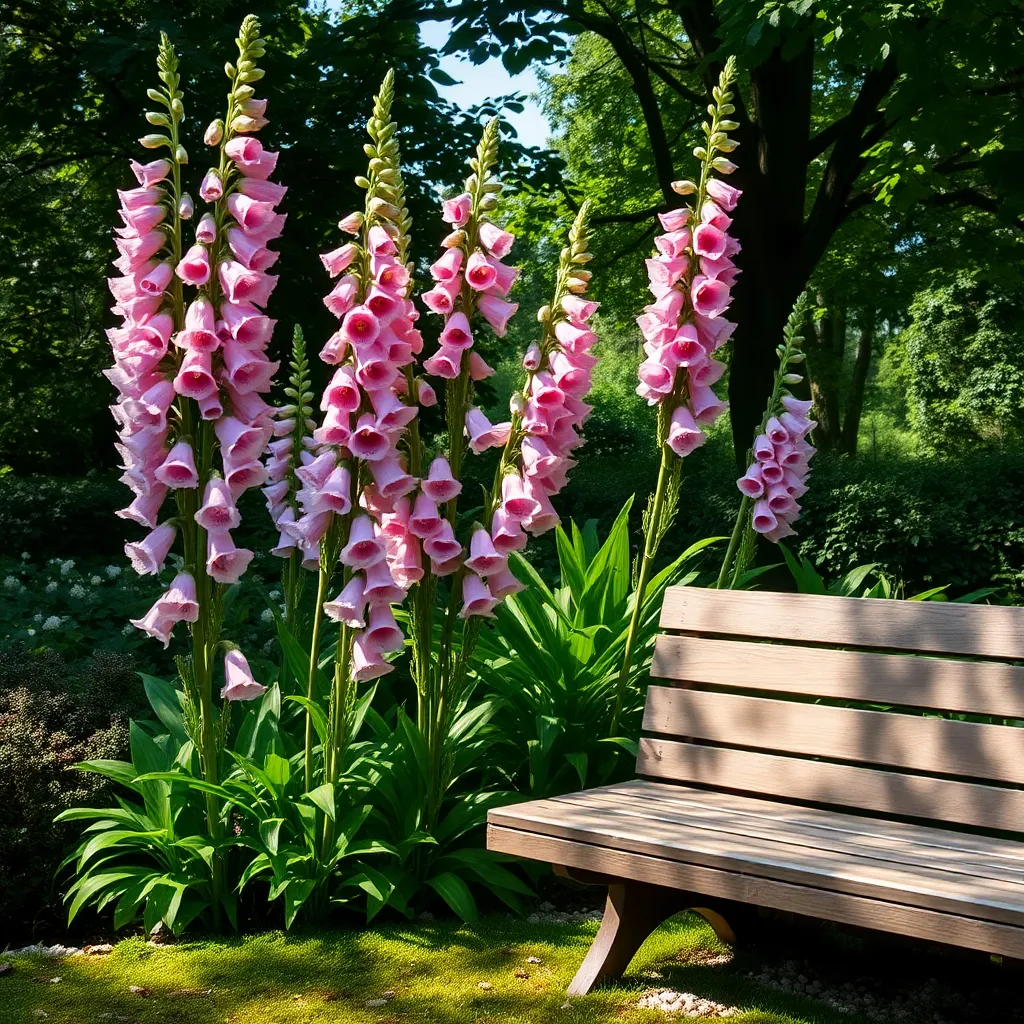
The Foxglove ‘Camelot Rose’ is a stunning addition to any shady garden, bringing a touch of elegance with its tall spikes of rose-pink flowers. This biennial plant is perfect for creating height in your garden, thriving in partial to full shade areas where many other flowering plants struggle.
When planting ‘Camelot Rose’, choose a location with well-drained soil enriched with organic matter. Ensure the soil remains consistently moist, especially during the growing season, as this plant does not tolerate drought well.
Space the plants about 18 inches apart to allow for proper air circulation, which helps prevent fungal diseases. Water the plants deeply once a week, adjusting frequency during particularly dry or wet periods to maintain optimal moisture levels.
For advanced gardeners, deadheading spent flowers can encourage a second flush of blooms, extending the plant’s flowering season. Consider allowing some flowers to go to seed, as this will help the plant self-seed and return in subsequent years, ensuring your garden remains vibrant and full of life.
Toad Lily (Tricyrtis hirta)
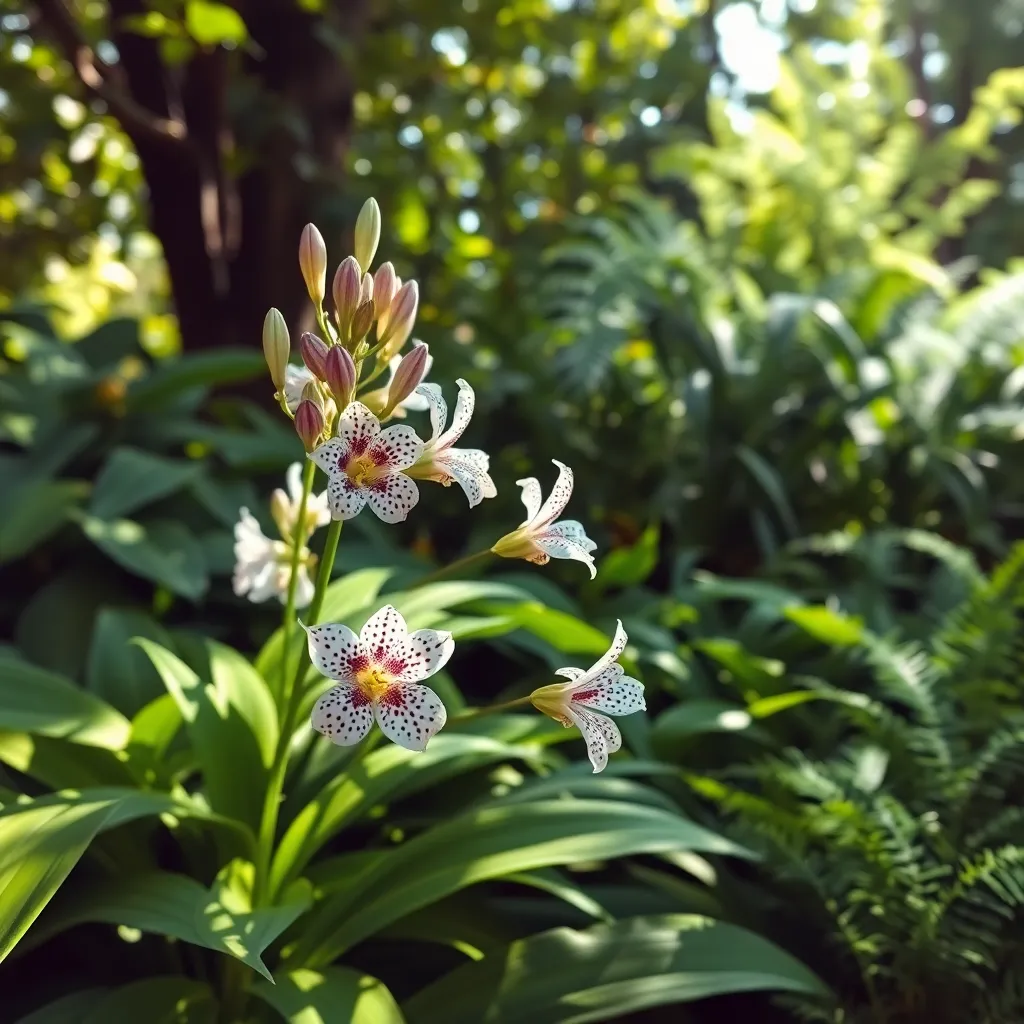
Toad Lily (Tricyrtis hirta) is a unique addition to any shady garden, offering delicate orchid-like blooms in late summer to fall. These exquisite flowers thrive in dark corners, providing a splash of color when most other plants are done for the season.
When planting Toad Lilies, choose a location that offers consistent shade and protection from harsh afternoon sunlight. They prefer moist, well-drained soil rich in organic matter, making them an ideal choice for gardeners who can amend their soil with compost or leaf mold.
Watering Toad Lilies regularly is crucial, especially during dry spells, to keep the soil consistently moist but not waterlogged. Mulching around the base of the plants helps retain soil moisture and keeps roots cool, which is essential in warmer climates.
For those looking to propagate Toad Lilies, consider dividing clumps every three to four years in early spring. This not only rejuvenates the plants but also gives you more specimens to spread throughout the garden, enhancing shady areas with their charming blooms.
Hellebore ‘Winter Jewels’ (Helleborus x hybridus ‘Winter Jewels’)
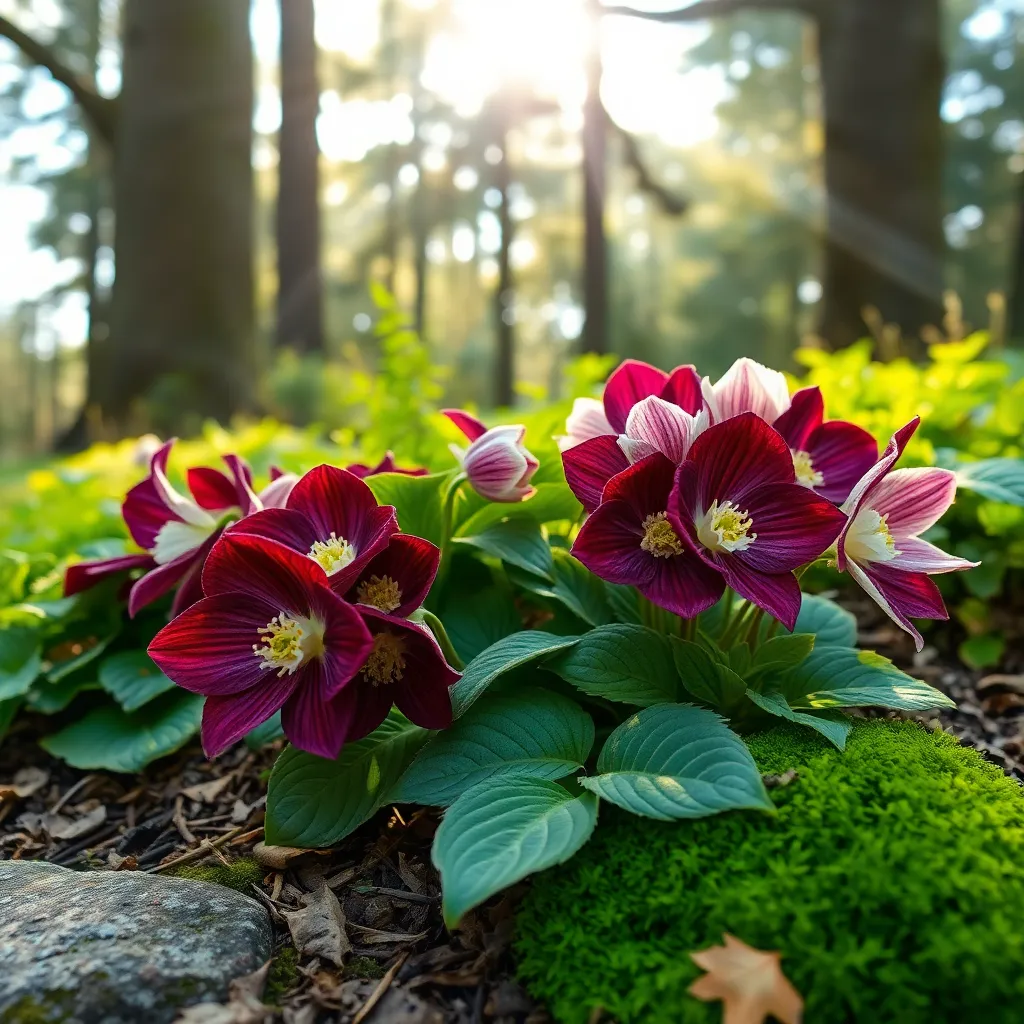
The Hellebore ‘Winter Jewels’ (Helleborus x hybridus ‘Winter Jewels’) is a stunning addition to any shaded garden, known for its vibrant blooms that appear in late winter to early spring. These flowers come in a variety of colors, including rich reds, soft pinks, and creamy whites, providing a splash of color when few other plants are in bloom.
For optimal growth, plant your Hellebore ‘Winter Jewels’ in well-draining soil that’s rich in organic matter. Amend the soil with compost or well-rotted manure to improve fertility and drainage, particularly if your garden soil is clay-heavy.
Hellebores thrive in partial to full shade, making them perfect for those tricky spots under trees or in the shadow of buildings. They prefer consistent moisture but do not like to sit in water, so ensure that the area is not prone to waterlogging.
To encourage healthy growth and prolific blooms, apply a balanced, slow-release fertilizer in early spring. Mulching around the plants can help retain moisture and suppress weeds, providing a healthier growing environment.
Japanese Anemone ‘Honorine Jobert’ (Anemone hupehensis var. japonica ‘Honorine Jobert’)
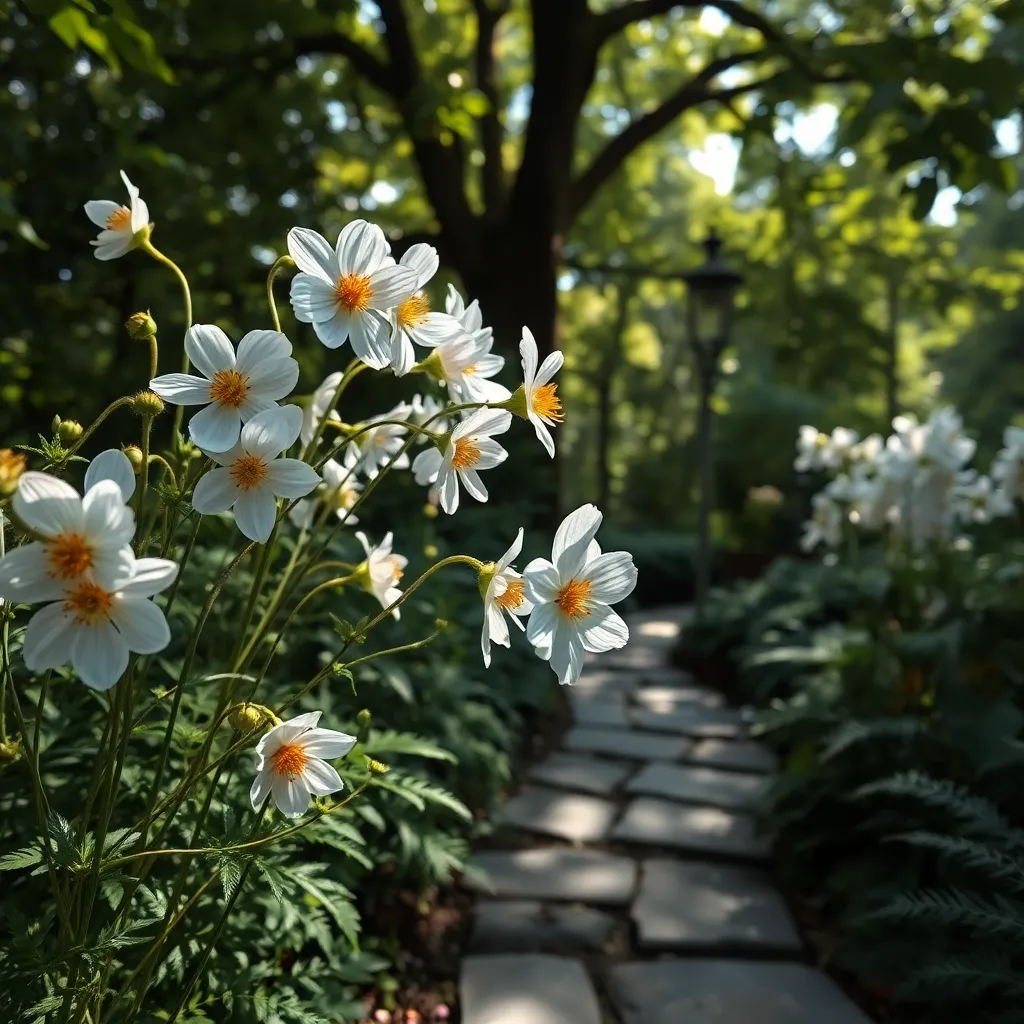
Japanese Anemone ‘Honorine Jobert’ is a stunning perennial that thrives in shady areas, providing elegant blooms from late summer into fall. With its pure white flowers and attractive dark green foliage, it brings a touch of elegance to any garden space.
To grow ‘Honorine Jobert’ successfully, plant it in well-drained soil enriched with organic matter. While it tolerates a range of soil types, adding compost will improve its growth and flowering potential.
Regular watering is crucial, especially during dry spells, to maintain consistent moisture levels. However, avoid overwatering as this can lead to root rot; aim for the soil to be moist but not waterlogged.
For beginners, it’s best to plant ‘Honorine Jobert’ in a location with partial shade, as too much sun can cause stress to the plant. More experienced gardeners might experiment with slightly sunnier spots, provided they monitor soil moisture closely.
In terms of maintenance, remove spent blooms to encourage more flowers and prevent the plant from self-seeding excessively. As a hardy plant, it requires minimal pruning, but cutting back the stems after flowering will keep it tidy and vigorous for the next season.
Lungwort ‘Mrs. Moon’ (Pulmonaria saccharata ‘Mrs. Moon’)

Lungwort ‘Mrs. Moon’ (Pulmonaria saccharata ‘Mrs. Moon’) is an excellent choice for bringing color and texture to shaded areas in your garden. Known for its striking foliage and delicate blooms, this plant thrives in partial to full shade, making it ideal for woodland gardens or under-canopy planting.
To ensure success with Lungwort ‘Mrs. Moon’, focus on providing it with the right soil conditions. Opt for a well-draining, organically rich soil with a slightly acidic to neutral pH to support healthy growth and vibrant foliage.
Regular watering is key in maintaining the health of this plant, especially during dry spells. Keep the soil consistently moist but avoid waterlogging, as this can lead to root rot.
For those looking to enhance their gardening skills, consider mulching around the base of the plant. This helps retain moisture and suppress weeds, while also contributing organic matter as it breaks down over time.
If you’re eager for lush growth, fertilize Lungwort ‘Mrs. Moon’ in early spring with a balanced, slow-release fertilizer. This can boost the plant’s vigor and encourage a more robust bloom cycle.
By following these tips, even beginner gardeners can enjoy the beauty and resilience of Lungwort ‘Mrs. Moon’ in their shaded garden spaces. Its low maintenance needs and stunning appearance make it a rewarding addition to any landscape.
Coral Bells ‘Palace Purple’ (Heuchera micrantha ‘Palace Purple’)
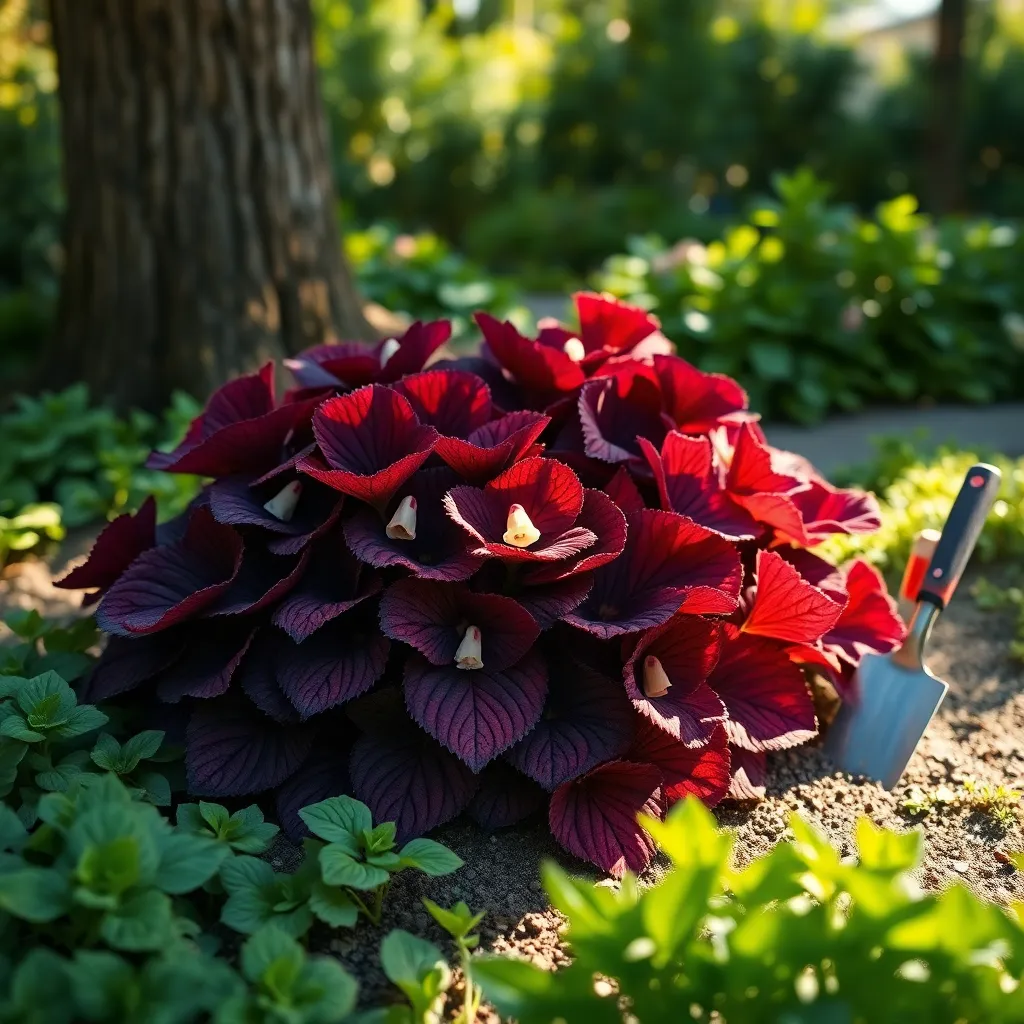
Coral Bells ‘Palace Purple’ is a versatile choice for shady garden areas, known for its stunning foliage. This heuchera cultivar presents deep purple, glossy leaves that contrast beautifully with its delicate, white flowers in late spring.
To thrive, ‘Palace Purple’ requires well-drained soil, enriched with organic matter. Consistent moisture is crucial, but ensure the soil is not soggy to avoid root rot.
Plant these perennials in a location with partial to full shade, which helps maintain their vibrant leaf color. For best results, add a layer of mulch to help retain moisture and regulate soil temperature.
For those looking to propagate, do so by dividing clumps in early spring or fall. Regularly deadhead spent blooms to encourage further flowering and maintain the plant’s neat appearance.
Advanced gardeners might consider experimenting with different shade-tolerant companions like hostas or ferns. This can create a visually appealing, textured garden bed that delights throughout the growing season.
Brunnera ‘Jack Frost’ (Brunnera macrophylla ‘Jack Frost’)
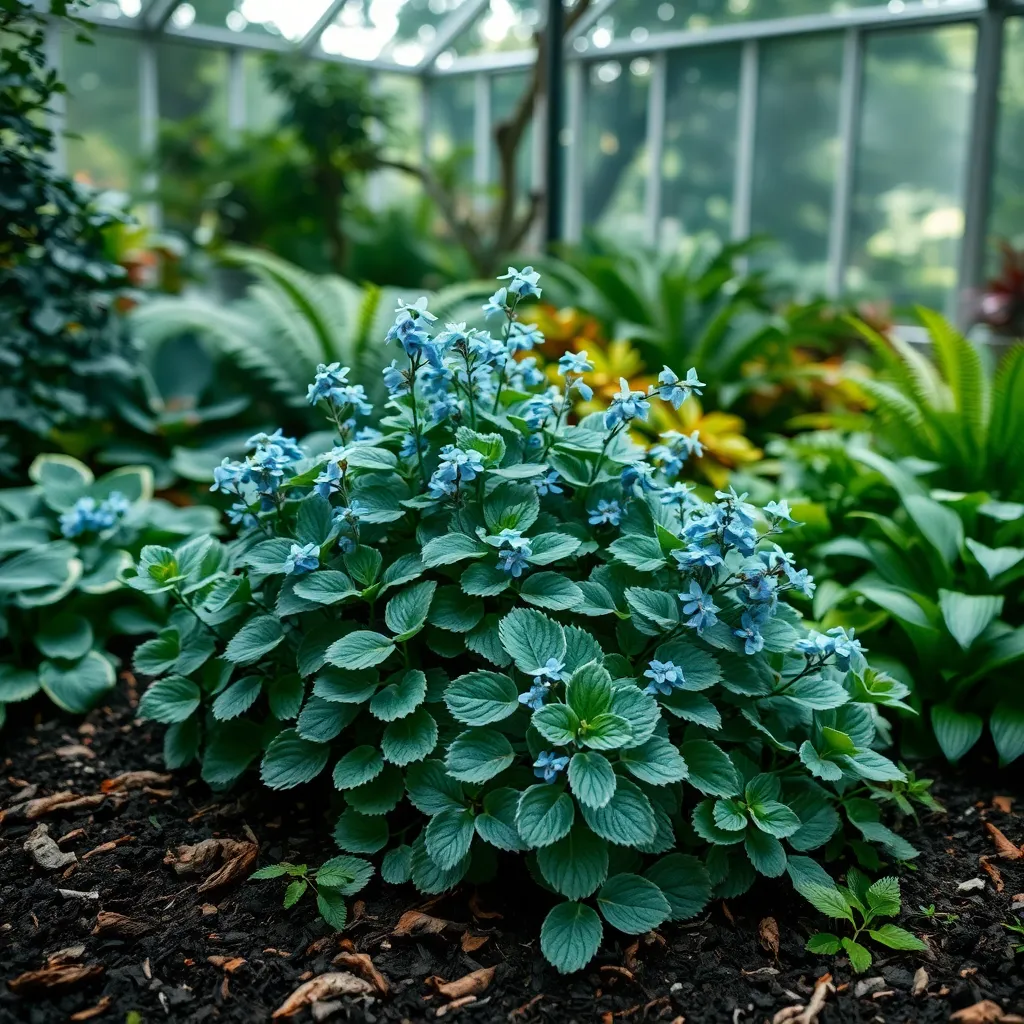
Brunnera ‘Jack Frost’ (Brunnera macrophylla ‘Jack Frost’) is a stunning choice for shady areas, bringing a touch of elegance with its silver foliage. This plant thrives in partial to full shade and prefers consistently moist, well-drained soil.
Its heart-shaped leaves are intricately veined, adding a unique texture to garden beds or borders. For optimal growth, ensure the soil is enriched with organic matter to maintain moisture levels.
In early spring, Brunnera ‘Jack Frost’ rewards gardeners with delicate, sky-blue flowers reminiscent of forget-me-nots. To encourage vigorous blooming, apply a balanced, slow-release fertilizer in early spring.
It’s a low-maintenance plant but benefits from mulching to retain soil moisture and suppress weeds. Pruning spent flowers and damaged foliage not only keeps the plant tidy but also promotes healthy growth.
Conclusion: Growing Success with These Plants
As we wrap up our exploration of the “10 Best Flowering Plants for Shady Areas,” remember that each plant symbolizes a unique relationship concept: patience, adaptability, nurturing, resilience, harmony, balance, growth, support, diversity, and trust. These elements, much like cultivating a shaded garden, are essential in fostering a thriving and fulfilling relationship landscape. Now, take a moment to reflect on these concepts and consider which ones resonate most with your current relationship dynamics.
An immediate next step is to identify one concept you wish to cultivate further and take a small, meaningful action today—be it a kind gesture, a thoughtful conversation, or a mindful reflection. As you embark on this journey, let this article be your companion and guide. Bookmark it now to revisit and refresh your understanding as your relationship evolves.
Remember, the seeds of a successful relationship are sown through continuous learning and growth. By nurturing these concepts, you are not only enriching your personal connections but also paving the way for a blooming future. Embrace this opportunity to cultivate deeper bonds and let your relationships flourish in the light of newfound understanding.

